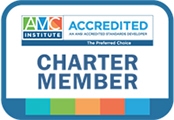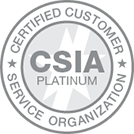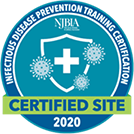For all the good that comes with globalized connections of like-minded individuals, it has created obstacles in the world of associations. Information that was deemed exclusive to members in the past now can be found with a simple Internet search. With the introduction of informal meet-up groups, networking is easier and opportunities can arise on-demand. Individuals no longer require a common meeting ground since the explosion of social media. Associations that brought professionals together now need to truly prove their value and offer benefits that create a sense of belonging and worth.
By the Numbers
With the steady maturation of the next generation (i.e., Millennials), attracting new members while retaining those who have remained loyal to an association has never been more challenging. According to the Marketing General Incorporated (MGI) survey, 62 percent of participating associations said membership acquisition was an association’s top goal. And only 46 percent reported growth in 2015. That’s a drop from 53 percent in 2014.
More, 49 percent said word-of-mouth is the most effective recruitment tool for gaining membership. That belief can negatively affect even the most creative marketing campaigns. But word-of-mouth is the control. It happens most often simply because members like to talk about their associations and their passion for them. It’s why they joined. Membership growth and retention is a matter of using different avenues to connect to prospective members and to keep them.
So let’s dig deeper. Though the numbers may seem anti-association on the surface, many of AH’s client partners have been able to take the challenges, convert them to opportunities and continue to grow.

How AH Client Partners Achieved Success
If word-of-mouth gets members into the association, then the best way to keep them is to engage. Members join associations because they want to and find value or something they can connect to once they belong.
While 49 percent of recruitment comes from the members themselves, the MGI survey found that 32 percent comes from email, and an additional 23 percent come from the association’s website. Developing an integrated marketing campaign using various channels such as social media, email and websites, helps associations leverage the best outlets for recruiting new members.
MGI mentions a multitude of reasons why members may leave an organization, from budget cuts (28 percent) to simply leaving the field or industry (20 percent). However, the No. 1 reason members leave associations is a lack of member engagement (38 percent).
Many of AH’s client partners experienced membership growth in 2015. Whether it was marketing or public relations, association expansion, introduction of new products or access to quality continuing education (CE) programs, AH client partners use a variety of methods to help their association grow. Four association success stories are highlighted in this piece:
Adding Members through Content Marketing
In the MGI study, 23 percent of association members listed networking as their top reason why they joined an association. So, even with the advent of the Internet and the eruption of social media, members of an association still want to engage with like-minded individuals in the field.
AH client partner, NADCA, the HVAC Inspection, Maintenance and Restoration Association, is one example of an association that focused on increasing membership in 2015. NADCA has a high retention rate, with 95 percent of members renewing their memberships in 2015. With a solid base, NADCA’s goal was to expand and prospect new members.
NADCA focused much of their efforts on content marketing, specifically, emphasized marketing the ACR, the NADCA Standard – a guide for top-of-the-line air duct cleaning services exclusive to and created by NADCA.
It became paramount for prospective NADCA members to understand that the ACR Standard was a premier document in the HVAC and indoor air quality industries and they needed to be a part of the industry association that was developing it. As an added benefit, the ACR Standard was written by past members of NADCA, meaning new members would be networking with those who created it – top minds in the field. Content marketing efforts of the Standard led to a 13 percent increase in membership for NADCA.
Engaging Members
According to MGI, 68 percent of participants said an association’s No. 1 goal was to increase member engagement. This is especially important for associations in fast-changing industries, such as health care. Member engagement helps health care associations ensure that they continue meeting the evolving needs of members. One group that emphasized increasing member engagement in 2015 was the American Association of Heart Failure Nurses (AAHFN). Each year AAHFN conducts a needs assessment survey shortly after their June Annual Meeting to find out what benefits mean the most to our members.
After gathering the responses, AAHFN saw members wanted more in-person involvement. Because of this important discovery, AAHFN started offering more face-to-face meetings across the country. Now, in addition to their annual meeting, they have two 30-Day Readmission Symposia and one Advanced Heart Failure symposium. The symposia are held twice a year on the weekends to make it easier for more people to attend. AAHFN reaches out to area hospitals that have been penalized or fined due to patient readmission – one of the core goals the association strives to limit – knowing that these institutions would be very likely to attend the events and find them valuable.
AAHFN relied on its members, membership committee and area representatives to spread the word about the events. These are events created for members, by members. “An informed member is usually an engaged member,” Gail Haas, director of operations for AAHFN said. “An engaged member retains their membership and encourages their colleagues to join.” Through their engagement, AAHFN saw a 10 percent increase in membership in 2015.

Educating Members
According to the MGI survey, 30 percent of participants leave associations due to the inability to justify membership costs without a comparable return on. In an effort to increase membership growth and retention, the American Society for Histocompatability & Immunogenetics (ASHI), put together a task force to see where they could identify untapped resources and maximize those already used.
When ASHI sought ways to grow its membership, it looked toward education. “Several years ago ASHI created an online University for members to earn CE credits,” said Cecilia Blair, Director of Operations for ASHI. “Members were now able to use ASHI as a bridge to access information in the field.”
ASHI had a 3 percent uptick in membership in 2015, in part because of its focus on access. ASHI revamped its University so that it encompassed a wider range of members. For those who weren’t able to make the workshops in person, ASHI offered modules and audio versions, meaning any member could access classes and earn CE credits.
Unearthing Association Data and Trends
Members of the Society for Information Management (SIM) are leaders in the IT field. They pay attention to the IT landscape and markets all over the nation. “Many times, all it takes is one or two interested people in an area to help get the ball rolling,” said Veronica Sullivan, Director of Operations of SIM. In 2015, due to its diligence and encouragement of members to expand, SIM opened two more chapters in Western New York and the San Francisco Bay Area. The network of chapters within SIM, coupled with support from SIM National provided to chapters, eliminates obstacles in starting up a chapter.In late 2014, SIM National provided all of their chapters with a rebranded “chapter kit” which included customized new logos, an editable/customizable fact sheet, an editable/customizable tri-fold brochure, business card template, PowerPoint template, retractable banner design file, and an email banner design file. With the help of the new brand rollout and by empowering their chapters to grow their individual memberships, SIM was able to increase their overall membership by 7 percent in 2015. By allowing chapters to promote in their own way using branded marketing materials, the growth that SIM experienced last year is only projected to continue increasing while people feel more connected to their area chapters and they have gained more recognition.
Membership Needs Going Forward
The challenges that come with membership growth and retention will continue and it’s up to associations to understand data, trends, and listen to and engage with their members. As younger generations begin to enter the workforce, and learn about the world of associations, growth strategies will have to be creative and different. AH client partners have met many of these challenges and continue to show an ability to propel associations into the future.




